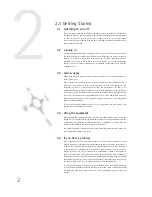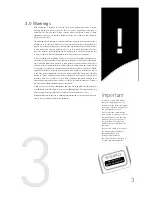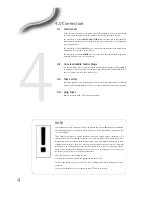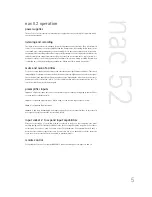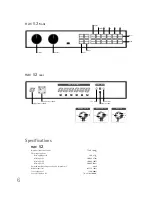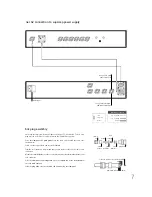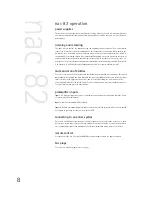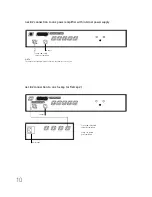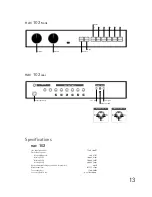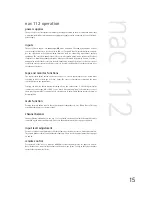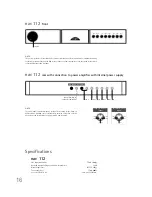
page
1.0 Equipment installation
Normally your Naim equipment will have been installed by the dealer who sold
it to you even if you live outside their immediate vicinity. Your dealer is
responsible for making sure that the system sounds exactly as it should and
information given here is not intended to reduce this responsibility in any way.
1.1 cables and connections
Please do not modify the standard interconnect cables supplied with your Naim
equipment. This is important for safety as well as performance. One end of each
cable is marked with a band to establish its correct orientation. The band always
marks the end that connects to the signal source.
Loudspeaker leads are also very important. Naim loudspeaker cable is correct for
your system and your dealer will make up leads to suit your equipment
installation.
The leads should each be at least 3.5 metres long and of equal
length
. The recommended maximum is 20 metres. Loudspeaker leads are, like
interconnect leads, directional, and should be connected so that the printed
arrow points towards the speakers. Using alternative loudspeaker cable will
degrade performance, and may even damage your amplifier. An exception to
these loudspeaker cable constraints is the
nap 6-50
multi-room power
amplifier. The
nap 6-50
is designed to be tolerant of both a wide variety of cable
types, and cable runs well in excess of 20m. The loudspeaker connectors supplied
with all Naim amplifiers and loudspeakers have been specifically designed to
make a robust mechanical connection. It is essential that these are used in order
to comply with current European safety regulations.
All the plugs and sockets supplied with your Naim equipment have been chosen
because they make the best possible connection for their purpose. A poor
contact will degrade the signal substantially and plugs and sockets should look
clean and free from corrosion. The easiest way to clean them is to switch off the
equipment, pull the plugs out of their sockets, and push them back in again.
Special contact cleaners and contact enhancers should not be used as they tend
to deposit a film which is very difficult to remove and may degrade the sound.
1
1.0
Equipment Installation
1.1 cables and
connections
2
2.0
Getting Started
2.1 switching on and off
2.2 running in
2.3 mains supply
2.4 siting the equipment
2.5 if you have a problem
3
3.0
Warnings
4
4.0
Connection
4.1 mains lead
4.2 non-rewireable mains
plugs
4.3 fuse carrier
4.4 plug fuses
5
nac 52
8
nac 82
12
nac 102
15
nac 112
18
narcom 2 remote handset
20
EC Declaration of Conformity
to Appropriate Standards
1



